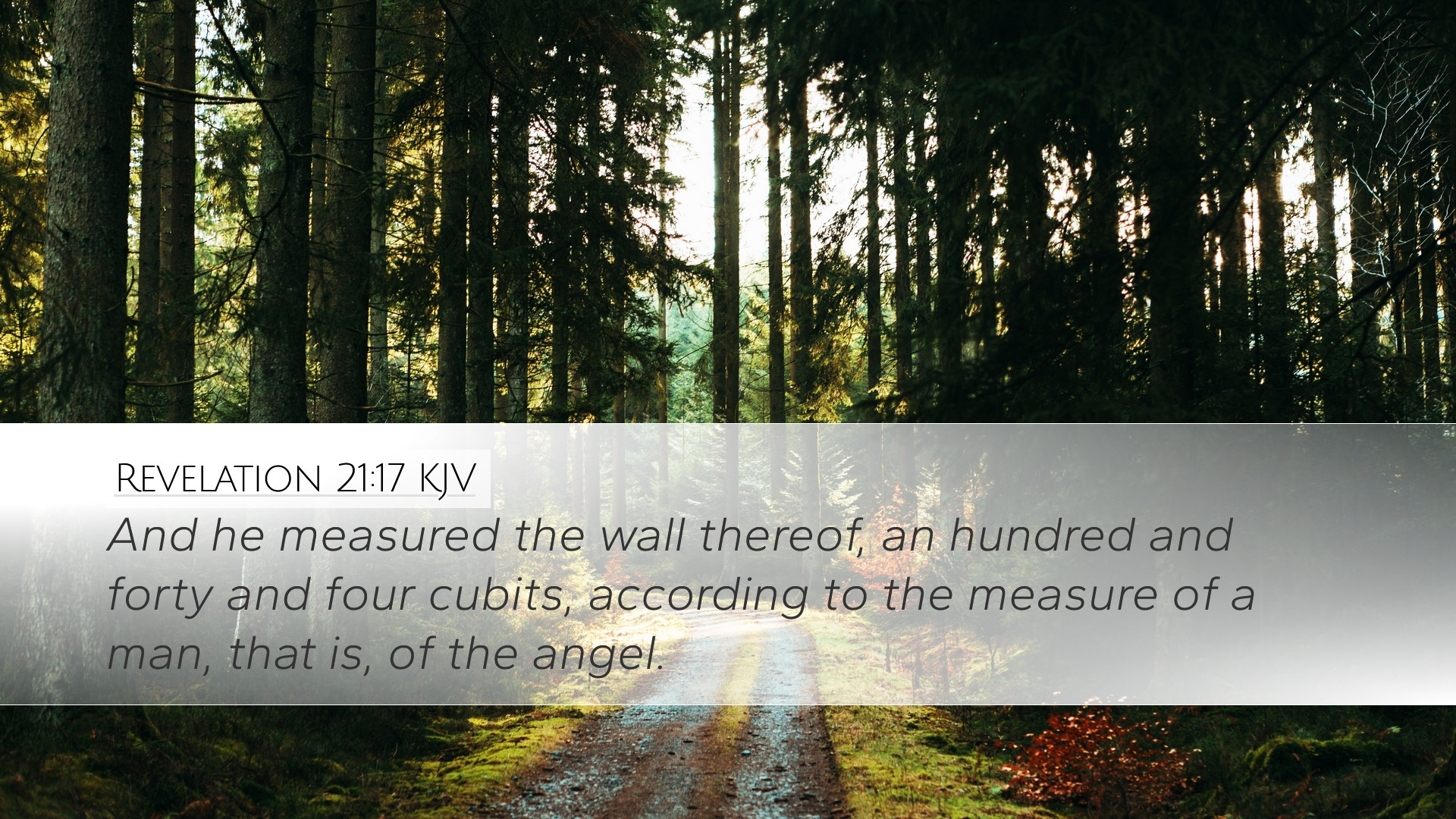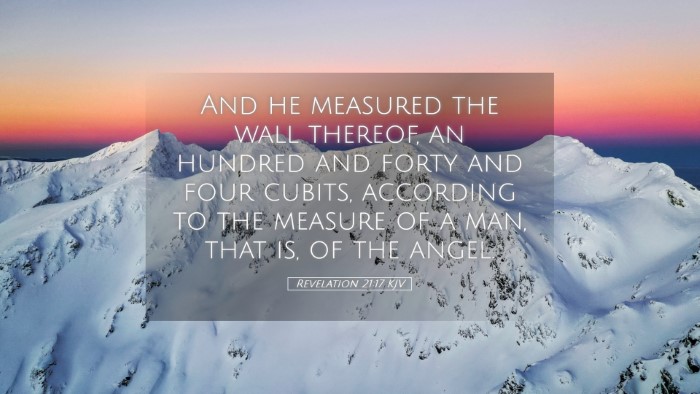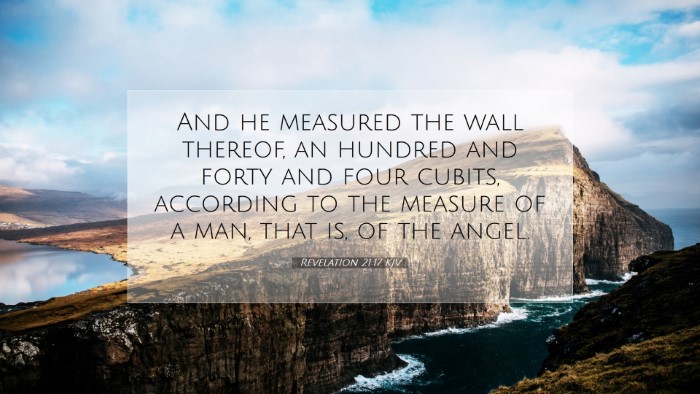Commentary on Revelation 21:17
Verse Overview: Revelation 21:17 states, "And he measured the wall thereof, an hundred and forty and four cubits, according to the measure of a man, that is, of the angel." This verse appears within the context of John's vision of the New Jerusalem, symbolizing the ultimate dwelling place of God's people.
Contextual Analysis
The book of Revelation often uses imagery and numbers with specific meanings. The measurement of the wall, particularly the 144 cubits, is not merely for architectural significance but serves a deeper theological function.
The Significance of Measurement
Matthew Henry: In his commentary, Henry emphasizes that the act of measuring suggests the completeness and perfection of God's new creation. The measuring is indicative of God's approval and authority over creation.
Albert Barnes: Barnes expands on this by noting that the measurement of the wall symbolizes the security and stability of the New Jerusalem. Just as a builder measures a structure to ensure it is sound and proper, God’s measurement signifies the assured protection and permanence of the eternal city.
Adam Clarke: Clarke observes that this measurement, made according to a "man’s measure," brings attention to the fact that God’s standards and perspectives align with human experience. God is personal, and His dealings are measured out for His created beings.
The Symbolism of 144 Cubits
In biblical numerology, the number 144 may point towards completeness and a divinely ordained structure. The number is derived from 12 multiplied by itself, reinforcing notions of God's covenantal relations with His people.
Matthew Henry: He associates the number with the twelve tribes of Israel and twelve apostles, suggesting that the New Jerusalem encompasses all of God’s people throughout history.
Albert Barnes: Barnes remarks that the dimensions reflect both God's justice and mercy, containing His people within secure boundaries, thus ensuring continual fellowship with the Divine.
The Wall: Protection and Holiness
The wall of the New Jerusalem is symbolic of both protection and separation from sin and evil. It serves to delineate the holy from the unholy, offering an eternal sanctuary to the redeemed.
Adam Clarke: Clarke notes that the wall signifies both the separating aspect of holiness and the protective nature of God's divine order. It establishes a clear distinction between the righteousness of heaven and the unrighteousness of the world.
The Measure of a Man
John writes, “according to the measure of a man, that is, of the angel,” which indicates a relational aspect of measurement. This phrase implies that the standards God applies transcend human understanding but are nevertheless relatable.
Matthew Henry: Henry interprets this as God's intention to engage humanity through tangible, understandable means. God accommodates His revelations to human comprehension.
Theological Implications of the New Jerusalem
This verse opens the door to a wealth of theological discussions. The depiction of the New Jerusalem signifies the culmination of God's redemptive history and serves as a profound hope for believers.
Albert Barnes: Barnes presents the notion that this portrayal invites believers to look beyond their current suffering and multiplicity of life’s challenges, pointing them towards a glorious future where God's justice will reign supreme.
Conclusion
Revelation 21:17 encapsulates profound truths about God's sovereignty, the nature of divine measurement, and the hope of eternal security in the New Jerusalem. Pastors, students, theologians, and scholars are invited to delve deeper into these insights, understanding that this new reality is framed within God's perfect measure, designed to include all whom He has called to Himself.


